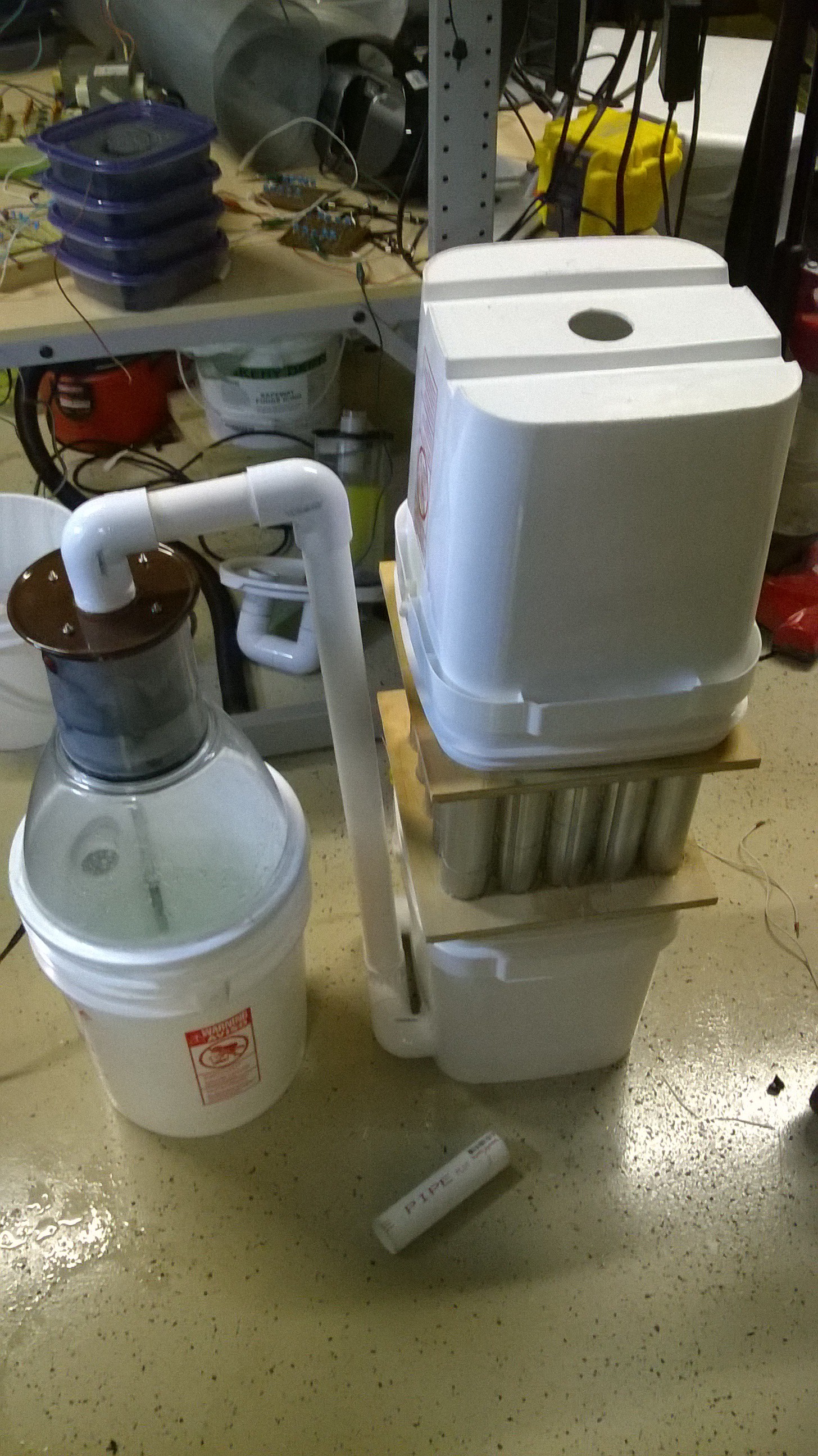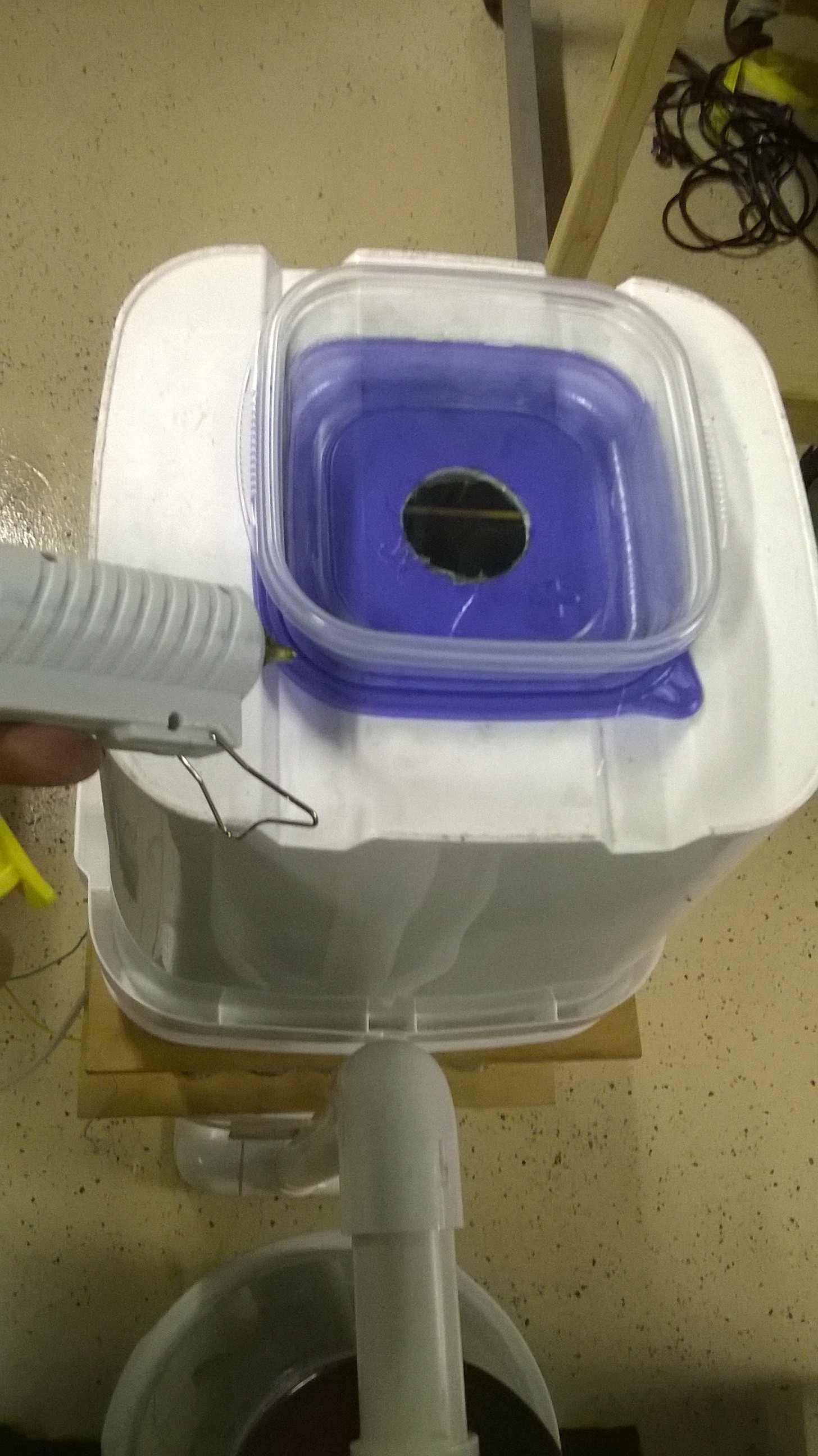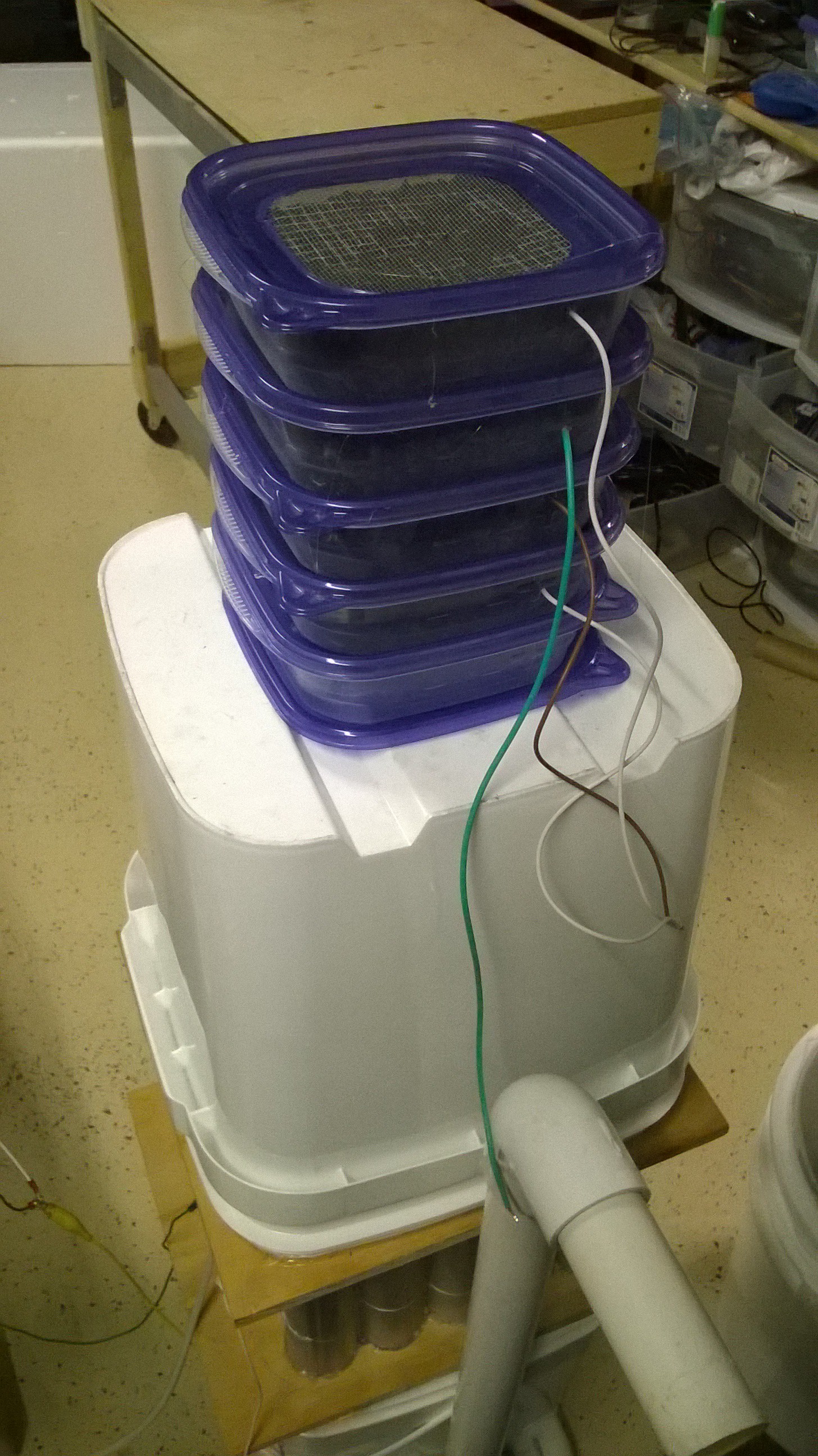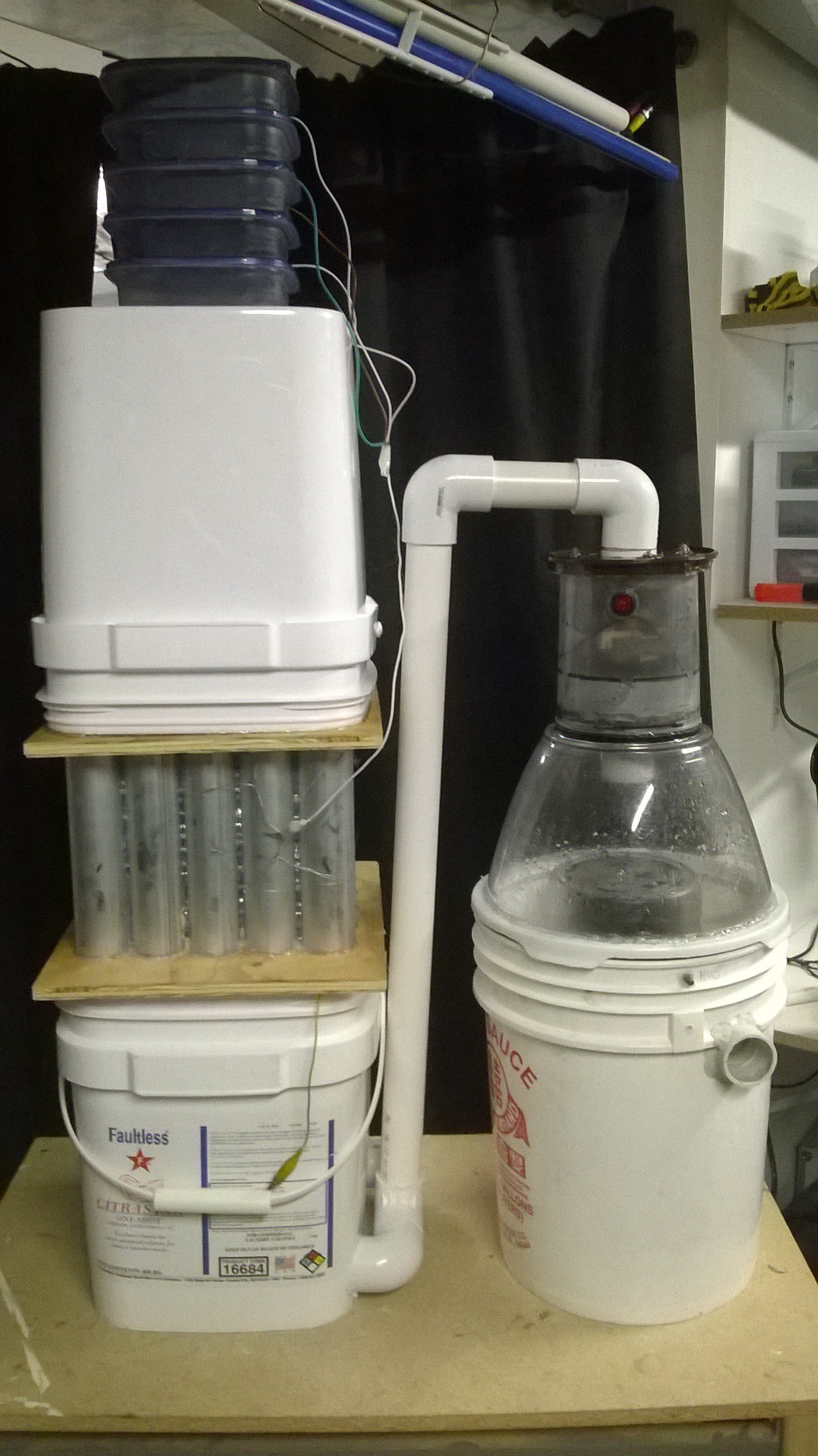Now it was time to assemble everything together, the wet scrubber, the electrostatic precipitator, and the activated carbon pods. I pondered for a while on what the order of the devices should be in. I knew I needed to keep the activated carbon as the last stage as it would gum up if it absorbed too many larger particulates. The question was whether to have the wet scrubber as the first or second stage. So far I had the electrical boosting at the first stage and the wet scrubber second. I decided to switch this and place the wet scrubber first as the wet scrubber could scrub all the fine particulates 2um and greater so the electrostatic precipitator could then take care of the ultra-fine particulates 2um and below to finally leave the activated carbon stage to absorb VOC's and any Ozone produced from the electrostatic precipitator.
I simply routed the output of the wet scrubber to the input of the ESP via PVC pipe fittings.
 I then glued a sandwich container to the top of the ESP so the activated carbon pods could interface to them.
I then glued a sandwich container to the top of the ESP so the activated carbon pods could interface to them.
 Then I took four activated carbon pods and glued them together into one module, then I mounted it on top of the ESP.
Then I took four activated carbon pods and glued them together into one module, then I mounted it on top of the ESP.
 I decided to use the electrically charged versions of the activated carbon pods and connect the carbon pods to the same polarity as that of the ESP tube walls, this gave additional collection surface for ultra-fine particulates and indeed it did help! Here is the finished unit. A unit of this size could scrub all of the pollutants in my whole workshop or even my house if I connected it to the HVAC system.
I decided to use the electrically charged versions of the activated carbon pods and connect the carbon pods to the same polarity as that of the ESP tube walls, this gave additional collection surface for ultra-fine particulates and indeed it did help! Here is the finished unit. A unit of this size could scrub all of the pollutants in my whole workshop or even my house if I connected it to the HVAC system.

There were a few leaks that I needed to hot glue and seal but after connecting everything, the tests were amazing! It worked rather well. I turned the blower motor on and shot the fog machine directly into the input, the fog poored out the output end but when I turned the electricity on, the fog dissappeared! I could make smoke signals with this machine by turning on and off the ESP hahaha! If I turned the blower to full speed I could see some penetration with some fog coming out the end but it wasn't very significant. With more electricity I believe I could easily achieve 99% collection efficiency in a small unit as this! YAAAAAAY it works!
Discussions
Become a Hackaday.io Member
Create an account to leave a comment. Already have an account? Log In.
Hello Jimmy
My Name is Parth.
I am from Chakr Innovation, New Delhi.
I read about the ESP you made, fantastic thing. I am working on similar thing as well - To tackle the environmental pollution,on a larger scale.
Based upon your work, I would like to take you on board as an advisor.
Let me know if you can spare some time.
Contact me : parth@chakr.in, +917982782806
Are you sure? yes | no